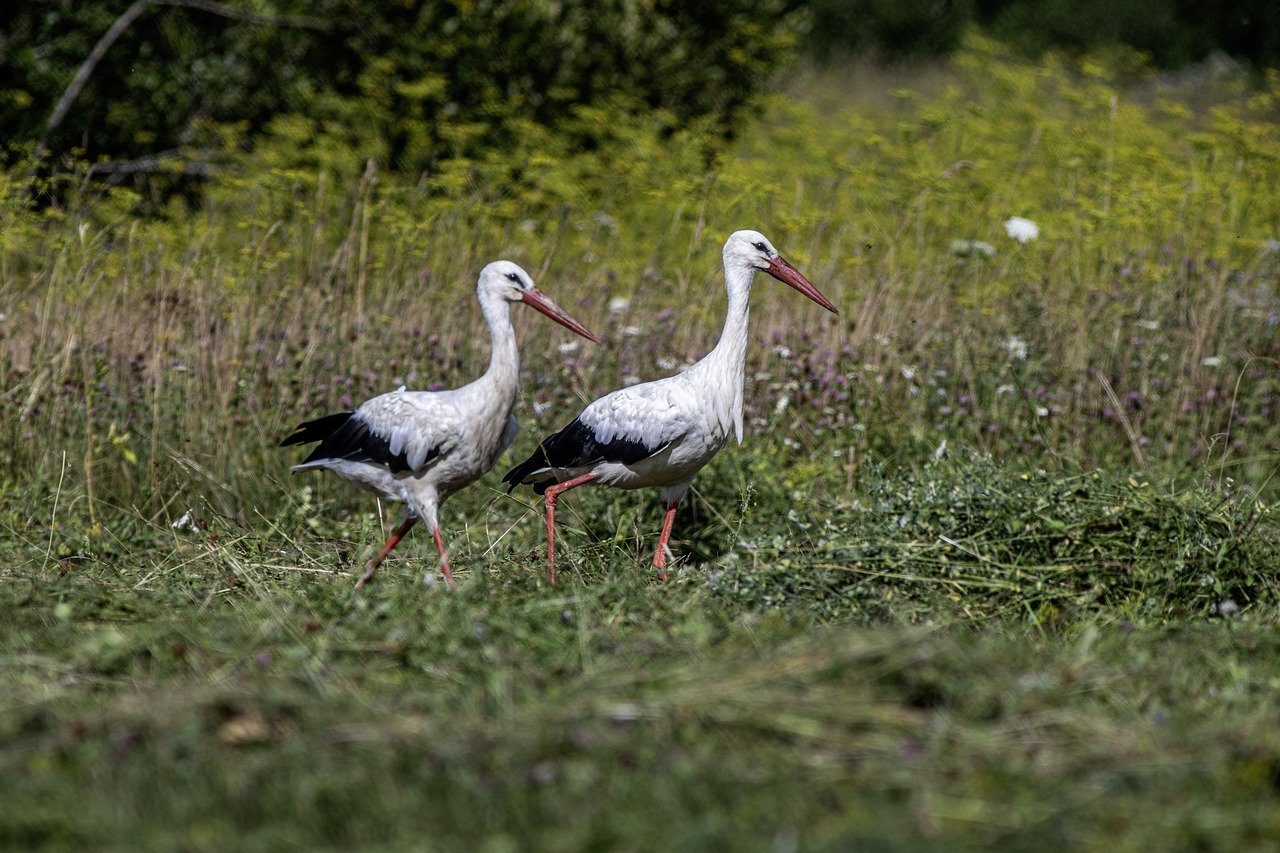The White Stork (Ciconia ciconia) is a large, graceful bird belonging to the stork family, Ciconiidae. Here’s some information about this magnificent bird:
- Appearance: White Storks are easily recognizable by their distinctive appearance. They have long legs, a long neck, and a large, pointed bill. Their plumage is predominantly white, with black flight feathers on their wings. Adult White Storks have a bright red bill and legs, while juveniles have duller bills and legs and may have patches of gray or brown plumage.
- Habitat: White Storks inhabit a variety of open habitats, including grasslands, wetlands, marshes, meadows, agricultural fields, and urban areas. They are often found near water sources where they can forage for food.
- Distribution: White Storks have a wide distribution range across Europe, Africa, and parts of Asia. They are migratory birds, spending the breeding season in Europe and northern Asia and migrating to Africa for the winter. Some populations are resident or partially migratory, depending on local conditions and food availability.
- Behavior: White Storks are social birds and often gather in large flocks, especially during migration. They are diurnal, meaning they are active during the day, and are known for their graceful flight, soaring on thermal currents in search of food. They are primarily carnivorous, feeding on a variety of small animals, including insects, fish, frogs, small mammals, and reptiles.
- Reproduction: White Storks typically breed in colonies, building large stick nests on platforms, trees, cliffs, or man-made structures such as chimneys and power poles. The female lays a clutch of 2 to 5 eggs, which are incubated by both parents for about 4 weeks. Both parents participate in feeding and caring for the young, which fledge after about 2 months.
- Conservation: White Storks are not considered globally threatened, although some populations may face threats from habitat loss, pollution, and collisions with power lines and other human-made structures. Conservation efforts aimed at preserving and restoring wetland habitats, protecting nesting sites, and reducing human disturbance are important for the long-term survival of this species.
Overall, the White Stork is a majestic and iconic bird appreciated for its beauty, grace, and important ecological role as a predator and scavenger in various ecosystems.
Visited 892 times, 4 visit(s) today
Views: 1318
Subscribe to the newsletter:
